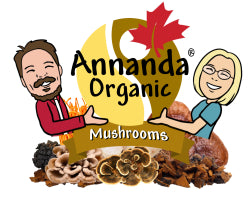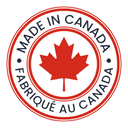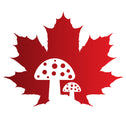What are Chaga Mushrooms?
Chaga is the common name for the fungus, Inonotus obliquus, used to brew chaga tea. Chaga is also commonly known as the cinder conk, and to some mycologists as the ‘clinker polypore’. In chinese cultures chaga is known as Bai Hua Rong or Hua Jie Kong Jun. The Japanese know chaga mushroom as Kabanoanatake.
Chaga Mushrooms may be found on wounded or dying white birch trees in temperate forests within northern europe, canada, the united states and throughout the northern hemisphere.
Chaga covers the tree's wound and protects it from invading microorganisms. The host tree and mushroom co-exist for many years. Chaga mushroom can be harvested up to three times over the course of its lifetime if harvested ethically with conservation in mind.
What Does Chaga Look Like?
Chaga looks like encrusted black formations; the parasitic fungus grows out of wounds sustained after storms and other impacts that break branches.

Although it is classified as a mushroom, chaga appears as a hard, sharp edged black colored growth on host trees. It grows on birch trees (Betula papyrifera) nearly exclusively, and only rarely has been found attacking other trees.
How to find and Harvest Chaga Responsibly
When harvesting wild Chaga always leave 1 to 2 inches behind so that the tree will remain protected and the chaga will regrow. Chaga mushroom can grow on live birch for up to 20 years; if harvested properly you can harvest 3 to 5 times during it's lifespan.
Chaga is in fact not a fruiting body but a sterile non sexed conk. The Chaga and the host tree live together; extending the trees life so that the fungi can feed.


Harvested chaga mushroom (Improper Harvest)

Improper harvesting of Chaga is a big concern. If all the Chaga is taken from the host tree, the tree will succumb to infection or disease and will die within a few years.
The Chaga will not regrow and will never have the opportunity to fruit and reproduce.
Beware of Fool's Chaga or Dead chaga
Beware of fool's chaga which grows on tree's other than birch. There are dozens of other tree fungus which look like chaga but are not. When finding chaga avoid taking it from trees that look similar to Birch - Aspen, Popular, Beech.



Only harvest Chaga from living white or golden Birch trees and never dead trees.
Chaga from dead or fallen trees is known as black or Dead Chaga and is most likely contaminated with mycotoxins.
- Chaga often grows high on the host tree so quite often one would need to climb up. It is best to use a deer stands so you can harvest without harming the tree.
- Higher up the more potent the Chaga becomes.
- Do not collect chaga from fallen or dead trees
- Do not gather Chaga outgrowths that are near or fallen to the ground.
- Do Not harvest Moldy chaga or collect pieces of chaga with bugs or larvae
- Do not harvest chaga that is black both on the interior and exterior.
- Do not harvest chaga from trees growing on or immediately near contaminated lands, mills, hydro-cuts, industry etc.
- Chaga should be at least the size of a large soft ball 3 to 5 inchs in diameter or larger
- You can use an axe or, large sharp knife or machete. Hammer & chisel or battery operated reciprocating saw because it is really very difficult to separate the outgrowths from the trunk.
- Always leave 1-2“ of chaga on the tree, never dig all of it out it will kill the tree and the inner core deep within the tree has no medicine.
- Discard any bits of birch bark or parts of the tree on-site.
How to Dry Chaga
- Leave the back outer crust – do not discard or file off.
- You can use an air compressor to blast away any bits of dirt, bark, needles etc.
- Chaga must be dried right away after harvest or put into a deep freezer for later drying and processing.
- Freshly foraged chaga mushroom is easily exposed to mold; thus, is should not be dried in an area that is too damp, cold or poorly ventilated.
- One should not attempt to dry chaga more quickly in a hot oven; otherwise, it will lose most of its biologically active nutrients
- Process chaga in a dry, warm, well-ventilated place.
- Cut fresh chaga into pieces that are no more 1-2 Inches and dry it until the pieces become hard and crumbly.
- A Commercial food dehydrator works great. Moisture meter readings should be 0 - 7%
Harvesting the Benefits of Chaga
The medicinal mushroom Inonotus obliquus is an ancient folk remedy that has been valued for its health benefits for centuries.
Helping to remove free radicals, reduce oxidative stress and destroy tumor cells. Chaga mushrooms are often compared to similar fungi like the Reishi, Shitake, Maitake and Oyster mushrooms.
Brewing chaga mushroom tea
Chaga tea benefits include use as a nerve tonic and anti inflammatory and powerful cancer fighter. Chaga mushroom benefits also include prevention against many of the top killers in North America.
Used for centuries in Traditional Chinese Medicine and considered as one of the most powerful healing plants on Earth.
- Improve the immune system
- Lowers blood sugar levels and combat cancer cells
- Helps reduce inflammation
- Fights heart disease
- Helps prevent blood clotting
- Relieves pain and purifies the blood and the liver
- Adaptogen for the body to heal.
Studies shows that Chaga supplements can support our health and well being with no side effects.
Source to Buy Quality wild chaga tea
Annanda Chaga mushrooms are wild harvested from the forests of North Western Ontario Canada.
Sustainable harvesting means we only take larger Chaga conks leaving small chaga to grow. Always leaving some behind so that the host tree is not damaged in any way.

Mushrooms Where to Buy
A Canadian Owned and family operated business in Northwestern Ontario Canada. Blair & Heather have been offering sustainable Organic Wild Harvested Canadian Chaga Mushroom tea and extracts since 2012.




